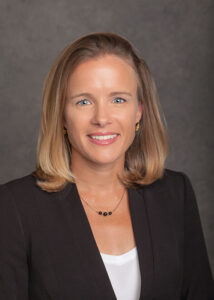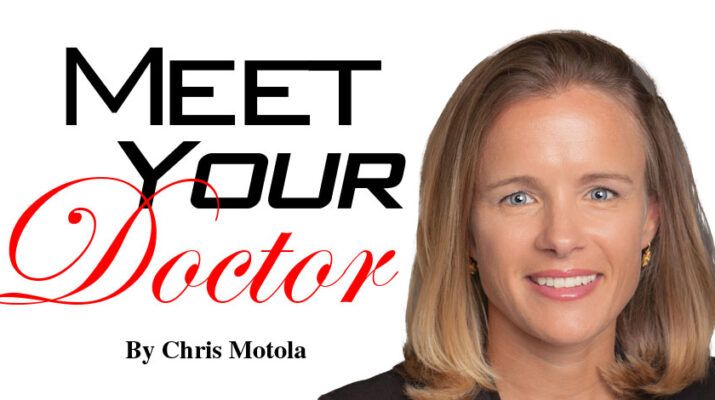Eye surgeon from The Eye Care Center talks about evolution in corneal transplantation, cataract surgeries, laser vision correction
By Chris Motola

Q. What kind of patients do you see?
A. Primarily, I see patients who have trouble with blurry vision that is attributable to the parts of the eye that deal with focusing of the light — the cornea and the lens. It is my goal to personally connect with patients to learn about the challenges they are experiencing, and then to apply solutions based on understanding of biology and optics to enhance their focus and optimize their vision. I often see patients who are having trouble with their vision and need cornea or cataract surgery. I also see those who are interested in improving their vision through laser vision correction surgery.
Q. What specialty areas do you focus your practice on?
A. A large portion of my work is taking care of patients who have blurry vision from cataracts. In this surgery, we remove the cloudy native lens — cataract — and place an intraocular lens in the eye. Cataract surgery is very gratifying to perform because most patients experience vast improvement in their vision and they are often surprised at how easy the process is to get through. As our technology and knowledge have evolved, we have more sophisticated ways to perform cataract surgery, such as laser-assisted cataract surgery. Plus, we have better ways to address refractive errors such as astigmatism and presbyopia with special intraocular lenses that are allowing us to continuously improve patient outcomes and satisfaction.
I also am trained in corneal transplantation surgeries. In recent years, there has been tremendous evolution in the surgical approach to corneal transplantation, which has made this a particularly exciting time to be a corneal surgeon. In the past, during the first 100 years of corneal transplantation, full thickness corneal transplantation was the only option. We are now doing targeted transplantation of only the diseased areas of the cornea. Sometimes, I only need to transplant one specific type of cell in order to make a cloudy cornea clear again and restore completely normal vision. For me, it is exciting to play a role in these mini-miracles that have such impact to transform lives.
A third component to my practice is laser vision correction, also known as LASIK. With laser vision correction, we reshape the cornea to better focus light and minimize need for glasses. I myself am a beneficiary of prior laser vision correction surgery and truly appreciate the freedom of independence from my glasses.
Q. Where do you do your procedures and surgeries?
A. Where we do a procedure largely depends on which procedure it is. Smaller procedures and many of our laser treatments are performed right in our office. We also perform the laser portion of laser assisted cataract surgery in our office. Other steps of cataract surgery and corneal transplantation surgery are performed in the operating room, but on an outpatient basis — meaning you go home the same day. Our office partners with several hospital operating rooms as well as ambulatory surgery centers in our area. If you need surgery, we will talk about what option might be best for you.
Q. What role does technology play in your work?
A. Technological developments allow us to better understand and measure the optical properties of each person’s eye. They also have helped us to understand the interactions between biological responses, such as how someone heals, and the impact of those changes on the focusing properties. This has allowed us to customize treatments for our patients to improve their outcomes. This focus on technology has been an integral part of The Eye Care Center’s approach to providing the best care possible to our patients.
Q. What research have you done and who funds it?
A. I have conducted National Institutes of Health (NIH) funded research. The focus was on how corneas heal and the impact of that healing on the focusing characteristics of the eye following new types of corneal transplantation. In addition, I have researched similar questions following laser vision correction. I have also collaborated with scientists to develop imaging technology to better understand corneal diseases and the tear film. I have participated in NIH sponsored multicenter clinical trials on dry eye (DREAM – dry eye assessment and management study) and shingles in the eye (ZEDS – zoster eye disease Study).
Q. What do you like to do when you’re not working?
A. I like to spend time with my husband, son and daughter. We are all avid downhill skiers so this is something we really love doing together. I also do ski patrol and enjoy the camaraderie of my fellow patrollers. In the summer, we can be outside — hiking, biking, swimming and exploring what life has to offer in this beautiful area. At home, we have a tuxedo kitty we all adore who rules our household with a gentle kindness and inspires us to be our best selves.
Lifelines
Name: Holly Hindman, MD, MPH
Office: The Eye Care Center with offices in Canandaigua, Geneva and Newark
Hometown: Rochester
Education and Training: Stanford University, bachelor’s degree in biology (1998); Harvard Medical School, MD (2003); Johns Hopkins University, residency in ophthalmology; University of Rochester School of Medicine and Dentistry, cornea fellowship training and a Master of Public Health (MPH) degree
Specialization: Cornea, cataract, laser vision correction surgery
Academic: Clinical associate professor, School of Medicine and Dentistry, University of Rochester
Certification: American Board of Ophthalmology
Licensed: New York state
Hobbies: Avid downhill skiing, hiking, biking, swimming, reading. She is member of the National Ski Patrol

